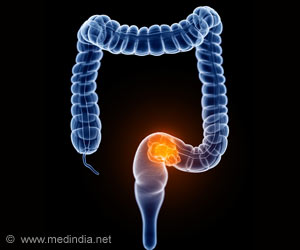Dairy consumption may lower heart disease and death risk. Therefore, consuming three servings of dairy products such as milk, yogurt, cheese and butter per day can help protect your heart health and reduce mortality risk.
- Dairy consumption may lower heart disease and death risk
- People who consume three servings of whole fat dairy per day are at a lower risk of death and cardiovascular disease
- Consumption of dairy products may be beneficial for cardiovascular disease and mortality, particularly in low-income and middle-income countries
The findings are consistent with previous meta-analyses of observational studies and randomized trials, but stand in contrast to current dietary guidelines which recommend consuming 2-4 servings of fat-free or low-fat dairy per day, and minimizing consumption of whole-fat dairy products for cardiovascular disease prevention.
Cardiovascular disease is the leading cause of mortality worldwide. The authors conclude that the consumption of dairy should not be discouraged and should even perhaps be encouraged in low-income and middle-income countries where dairy consumption is low.
"Our findings support that consumption of dairy products might be beneficial for mortality and cardiovascular disease, especially in low-income and middle-income countries where dairy consumption is much lower than in North America or Europe," says lead author Dr. Mahshid Dehghan, McMaster University, Canada.
The Prospective Urban Rural Epidemiological (PURE) study included data from 136,384 individuals aged 35-70 years in 21 countries [1]. Dietary intakes were recorded at the start of the study using country-specific validated food questionnaires. Participants were followed up for an average of 9.1 years. During this time, there were 6,796 deaths and 5,855 major cardiovascular events.
Dairy consumption was highest in North America and Europe (368g/day or above 4 servings of total dairy per day) and lowest in South Asia, China, Africa and southeast Asia (147, 102, 91 and 37g/day respectively - less than 1 serving of total dairy per day).
Compared to the no intake group, the high intake group (mean intake of 3.2 servings per day) had lower rates of total mortality (3.4% vs 5.6%), non-cardiovascular mortality (2.5% vs 4%), cardiovascular mortality (0.9% vs 1.6%), major cardiovascular disease (3.5% vs 4.9%), and stroke (1.2% vs 2.9%). There was no difference in the rates of myocardial infarction between the two groups (1.9% vs. 1.6%).
Among those who consumed only whole-fat dairy, higher intake (mean intake of 2.9 servings of whole fat dairy per day) was associated with lower rates of total mortality (3.3% vs 4.4%) and major cardiovascular disease (3.7% vs 5.0%), compared to those who consumed less than 0.5 servings whole-fat dairy per day.
Higher intake of milk and yogurt (above 1 serving per day) was associated with lower rates of the composite outcome, which combines total mortality and cardiovascular disease (milk: 6.2% vs. 8.7%; yogurt: 6.5% vs. 8.4%), compared to no consumption. The differences in the composite outcome for butter and cheese were not significant as intake was lower than for milk and yogurt.
The authors say that more research into why dairy might be associated with lower levels of cardiovascular diseases is now needed. The recommendation to consume low-fat dairy is based on the presumed harms of saturated fats on a single cardiovascular risk marker (LDL cholesterol).
However, evidence suggests that some saturated fats may be beneficial to cardiovascular health, and dairy products may also contain other potentially beneficial compounds, including specific amino acids, unsaturated fats, vitamin K1, and K2, calcium, magnesium, potassium, and potentially probiotics. The effect of dairy on cardiovascular health should, therefore, consider the net effect on health outcomes of all these elements.
Limitations include that diets were self-reported. While multiple weighted food records may be more accurate, they require extensive training, motivation, awareness, and literacy which limits the practicality for such a large long-term study.
The authors also note that diet was measured at baseline and that changes in diet may have occurred over time. However, they add that the association between milk intake at 3 years follow up and cardiovascular disease was similar to the analyses using baseline information, suggesting that repeat measurements are unlikely to alter the findings.
Writing in a linked Comment, Jimmy Chun Yu Louie (University of Hong Kong), and Anna M Rangan (University of Sydney) conclude that dairy dietary guidelines do not need to change just yet. They write: "The results from the PURE study seem to suggest that dairy intake, especially whole-fat dairy, might be beneficial for preventing deaths and major cardiovascular diseases.
However, as the authors themselves concluded, the results only suggest the "consumption of dairy products should not be discouraged and perhaps even be encouraged in low-income and middle-income countries." It is not the ultimate seal of approval for recommending whole-fat dairy over its low-fat or skimmed counterparts. Readers should be cautious, and treat this study only as yet another piece of the evidence (albeit a large one) in the literature."
Source-Eurekalert















